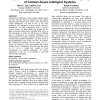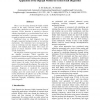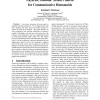1660 search results - page 240 / 332 » A Behavior Model for Next Generation Test Systems |
CHI
2009
ACM
15 years 10 months ago
2009
ACM
Context-aware intelligent systems employ implicit inputs, and make decisions based on complex rules and machine learning models that are rarely clear to users. Such lack of system...
IEEEARES
2006
IEEE
15 years 3 months ago
2006
IEEE
There is an increasing demand for highly reliable systems in the safety conscious climate of today’s world. When a fault does occur there are two desirable outcomes. Firstly, de...
CA
1997
IEEE
15 years 2 months ago
1997
IEEE
Face-to-face interaction between people is generally effortless and effective. We exchange glances, take turns speaking and make facial and manual gestures to achieve the goals of ...
HICSS
2007
IEEE
15 years 4 months ago
2007
IEEE
On December 26, 2004, countries in the Indian Ocean basin were struck by a tsunami generated by a large magnitude earthquake just south of the western tip of Sumatra. Observations...
106
click to vote
ATVA
2007
Springer
15 years 4 months ago
2007
Springer
Fault tree analysis is a traditional and well-established technique for analyzing system design and robustness. Its purpose is to identify sets of basic events, called cut sets, wh...



